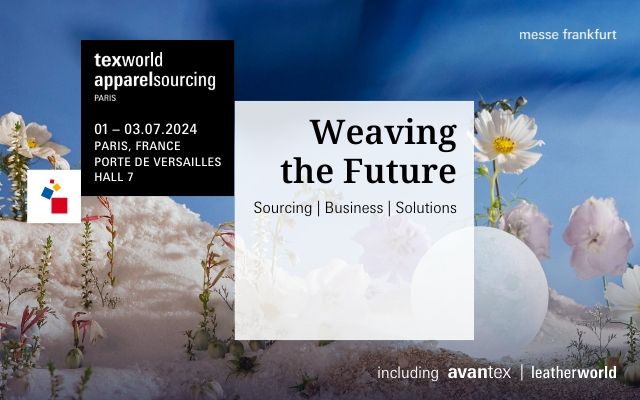Textiles manufacturers arescrambling to create new fabrics that are more functional and green-the propertiesconsumers demand
THE STATUS-obsessed power dressers of the 1980s wouldn't be impressed: theirsignature garment, the big-shouldered power suit, is making a comeback as oneof the key looks in the coming winter season. But in the 21st century,it is much more likely to be made of renewable fibers and recycled materials,and enhanced by the latest innovations that improve textile performance.
And it's not just for power dressersthat shiny polyester is out, and high-tech fibers are in: at August's FinaWorld Championships sporting event in Rome there was controversy over thesuggestion that a range of space-age swimsuits have given some athletes an unfairadvantage-not to mention several world records.
The latest innovations have madetextiles more functional, ecological, sustainable and often cheaper. Manyleading chemical companies are at the forefront of these changes and theirinnovations came about from listening closely to the market.
Swiss specialty group Clariant, forexample, works with customers to develop products that respond to theirspecific needs, enhanced with cutting-edge technology, says Thomas Winkler,head of Clariant's textile business unit, adding that the key to his company'sinnovative flair is that it is driven by the needs of the market.
Clariant's new ecological productscombine performance with cost-saving benefits and include the sanitized TH27-24 liquid, under its Build-tech/ Home-tech brand, a high concentratedmultiple-effect agent that keeps textiles permanently fresh anddermatologically safe.
The company has also recentlyintroduced the Nuva N2116 liquid, a repellent for nonwovens such as medicalwear, protective clothing and other applications in the transport sector. Theproduct is free of perfluorooctanoic acid (PFOA), which has been used by manytextile firms as a coating agent in all-weather clothing, but which has causedsome health concern in the US.
Winkler says that with a fast curingprofile even at low drying/curing conditions, Nuva N2116 can be used withsensitive fibers such as polypropylene (PP) and on sensitive colors, adding: "TheNuva N series, based on the C6 fluorocarbon chemistry, is designed to provideexcellent water and oil repellency, and is nonsensitive with regards tocompatibility with other finishing chemicals."
Hans Kohn, chief operating officerof Swiss company Schoeller Technologies, says Coldblack finishes, offering bothsun and UV protection, have gained interest in many markets, especially fordark colors.
NanoSphere technology, says Kohn, ishighly functional with self-cleaning, water and oil-repelling properties, andenvironmentally advanced components, as well as being PFOA-free. "Afurther feature of NanoSphere's longevity is evident in the Bundesmann raintest [which measures resistance to and absorbance of water.] After 10 minutesof constant exposure to rain with a simulated 100 liters of water on a 1m2[10.75 ft2] fabric sample, NanoSphere still displays a value of 4 (maximum =6), while a conventional product achieved only a level of 1."
Another recurring issue for theindustry is to have deep black shades with metal-free dyes. Switzerland-based HuntsmanTextile Effects, which in March moved offices to Singapore to be closer to keycustomers in the Asian market, has developed a product that meets thatspecification, according to Paul Hulme, president of Textile Effects.
Hulme says the Lanasol range ofmetal-free dyes represents Huntsman's commitment to protecting the environment."Lanasol Black exemplifies our innovation because we can achieve the samedeep shades for wool and fine animal hairs which were previously consideredunattainable without metal. In addition, Miralan is a dyeing auxiliary thathelps to save both cost and time with enhanced performance of the dyes."
Huntsman's other new products in the pipeline include the Gentle Power Bleach, for sustainability in textiles and the latest Novacron S (from its flagship reactive dye range for cellulosics) for brilliant shades.
Meanwhile, the textile chemicals business division of BASF, a German chemical giant, offers textile auxiliaries for weaving, pre-treatment and dyeing, as well as solutions for pigment printing, finishing and textile coatings.
Advanced Capabilities
Yoko Koike, head of communications for textile chemicals at BASF, says a new
technology named Texapret E electroconductive textiles (E-Textiles) combines
typical textile properties with electrical or metallic functions such as
thermal and electrical conductivity.
A new textile coating solution based on its Texapret range is also launched for manufacturing artificial leather used for furniture.
BASF also offers a variety of solutions for home textile applications with self-cleaning effects and water, oil and dirt repellency qualities. One example is an active ingredient in washing agents based on nanotechnology called Mincor for removing stubborn dirt particles by simply washing with water.
Danish biochemical group Novozymes meanwhile, is concentrating on providing bio-based solutions to improve industrial textile performance. The company has pioneered bio-polishing-which aims to create a smooth fabric appearance and introduce a degree of softness without the use of traditional, synthetic additive chemicals. In a typical biopolishing process, cellulase enzymes modify the surface of cotton fabrics in a manner that permanently prevents pilling, or wear, and increases smoothness and softness
Two key Novozymes biopolishing products are: Cellusoft Combi (currently its best-selling product) and Cellusoft CR, according to Suresh Chandran, global marketing director - textiles and leather at Novozymes Malaysia. The Cellusoft Combi allows for combined bio-polishing and bleach clean-up in one step, and can be added to the dyeing process. Cellusoft Combi can reduce processing time by 45-50% compared to traditional acid biopolishing, reduces water usage and improves the fabric appearance. Mills can actually save money by using the neutral process compared to traditional acid biopolishing and is cost-neutral if the mill does not currently biopolish," says Chandran.
Apart from technologies that enhance the easy care, performance and durability factors of textiles, technologies that offer protection from the elements are also important.
Solar Protection
Austrian fibers company Lenzing, has developed a new fiber with solar
protection, according to Christina Kreuzwieser, head of global marketing
communications in the textiles business unit. The Tencel Sun Fiber has an
incorporated permanent pigment integration and inherent long-term UV protection
as well as optimum moisture transport.
Another increasingly important property for textiles is flame retardancy.
A 2007 report by global consultancy Frost & Sullivan found that carbon nanotubes could be more affordable and useful to industrial areas, including the flame retardant materials market for a vast range of uses, such as textiles, automobiles and furniture.
The report revealed that nanotubes increase fire resistance, while enhancing material strength and providing an electrostatic discharge effect, and are more sought-after than their cheaper brother, carbon nanofibers, because the particles provide nonflammability with relatively small concentration compared to the other fillers.
Krzysztof Grzybowski, industry analyst at Frost & Sullivan for its Technical Insights group, says: "Phosphorous-based flame retardants will be the best market for nanotubes as a flame-suppressing agent to pursue in the future. As prices for this additive fall, there will be an improvement in know-how among developers and an awareness among end-users about their beneficial features."
In the area of renewable resources, NatureWorks, owned by US industrial group Cargill, supplies the naturally renewable polylactide biopolymer under the Ingeo brand name. Meanwhile, new technologies are being developed in the area of recycling. In the textile and clothing sector, recycling can take several forms. Brazilian designer Marcia Ganem uses recycled polyamide fibers from car seat belts for her unique hand-crafted designs, as seen at the PURE fashion trade show, in London, UK, in August.
Courtesy: Lucia Carpio
Originally published in New Cloth Market: September 2009













Comments